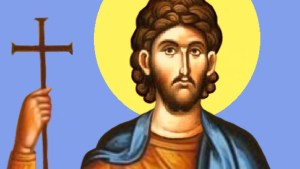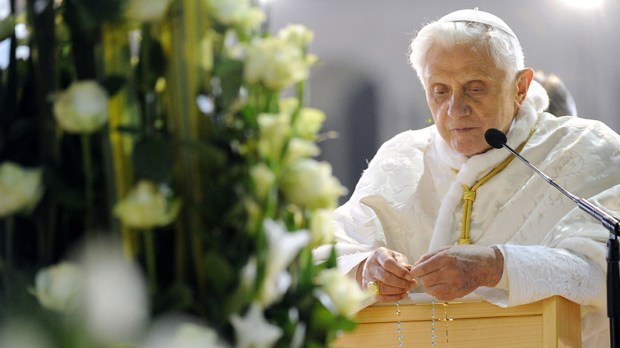Joseph’s silence in the Gospels “is also his message,” Benedict XVI said in an interview with the German periodical Tagespost, published April 1, 2021. Interviewed on the occasion of the Year of St. Joseph—his patron saint (he was born Joseph Ratzinger)—he considers that the silence of Mary’s husband is a “’yes’ that he took upon himself in his union with Mary and thus with Jesus.”
On the occasion of the Year of St. Joseph, the Pope Emeritus delivered a meditation on the place occupied by the adoptive father of Christ. He began by praising Francis’ apostolic letter, Patris Corde, dedicated to Joseph. “It’s a very simple text, which goes straight to the heart, but which contains very great depth,” he said.
In continuity with his successor’s reflections, Benedict XVI emphasized how discreetly Joseph devoted himself to the Holy Family, which explains why he is only a “silent presence” in the Gospels. His silence “is also his message,” he noted, because “it expresses the ‘yes’ that he took upon himself in his union with Mary and thus with Jesus.”
The mystery of Joseph, associated with that of Nazareth
As a connoisseur of sacred texts, the 93-year-old theologian also proposed an exegetical reading of the prophecy of the “tree of Jesse” in the book of Isaiah, which he considers a “silent reference” to Joseph. In the Old Testament, this dead tree, described as a sterile stump by the prophet, must give birth to a branch, the Messiah. For the Catholic Church, this is a prophetic announcement of the birth of Christ from the womb of the Virgin Mary, but also of the paternal nature of Joseph.
While the branch is traditionally described as a rose, to associate it with the Mother of Christ, Benedict XVI states that the texts indicate that it is actually a sprout of rice. This is an important detail, he points out, because it is perhaps the only text in the Old Testament to make the connection with the city of Nazareth.
In fact, he explains, the etymology of the name of the city where Christ spent his childhood could derive from the Babylonian word “nezer,” meaning “rice.” Even if it is only a hypothesis, the village of Joseph and Mary would thus carry within it a reference to the tree of Jesse.
Regretting that the figure of Joseph is little present in the presentations to pilgrims in the Holy Land when they visit the places where Christ lived, Benedict XVI expressed the wish that more space be given, during visits to the Lord’s childhood village, to the discovery of the “inner Nazareth” which is opened by the figure of Christ’s legal father.
St. Joseph’s Day at the Ratzingers
Finally, the Pope Emeritus shared with us how they celebrated St. Joseph’s Day—his patron saint but also that of his father—in his family when he was growing up in Bavaria. On that day, his mother gave him a “precious book,” he recalled, which she saved up money to buy.
A tablecloth embroidered with the saint’s name was placed on the table with a bouquet of primroses, the symbol of spring. Lunch was usually accompanied by coffee made from beans, which her father enjoyed, and for the children there was a cake “whose icing fully expressed the character of the feast.”

Read more:
Why you should celebrate your name day
Praying to St. Joseph as death approaches
Benedict XVI also confirmed that it was a “well founded” tradition to entrust oneself to St. Joseph on the verge of death. The legal father of Christ is thought to have died during Christ’s lifetime, he said, unlike the Virgin Mary, who according to tradition was at St. Joseph’s deathbed.
While the pontiff emeritus regularly prays to his patron saint, he cannot say exactly which blessings he has received thanks to his intercession. He says he always prays to several saints together, and is “always devoted to all of them” and does not distinguish the benefits received through the intercession of one or the other.

Read more:
Why the saints turn to St. Joseph

